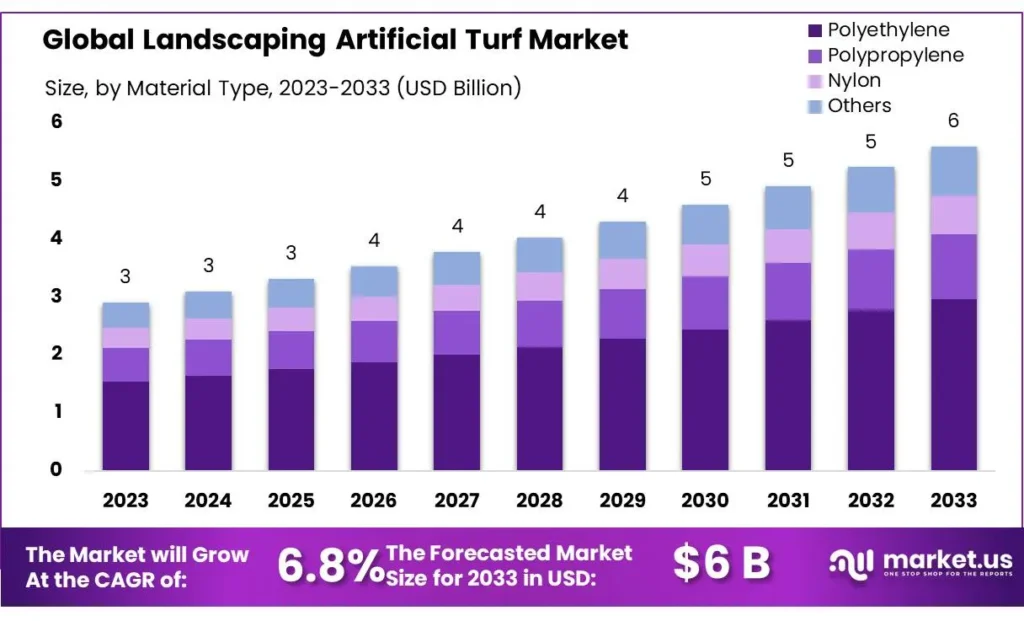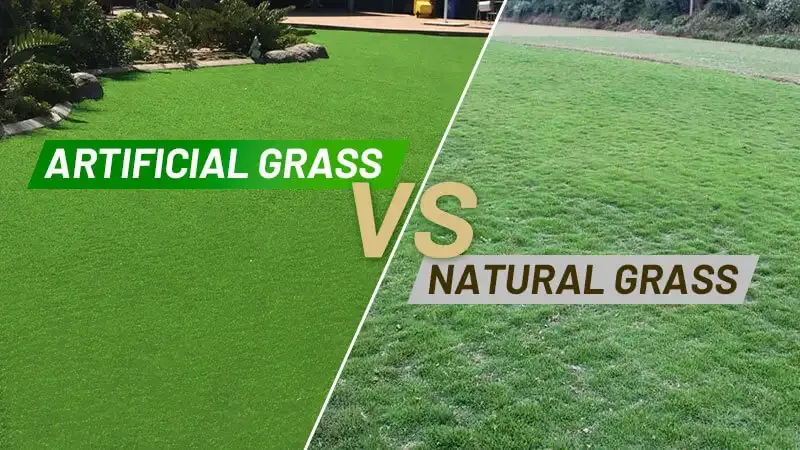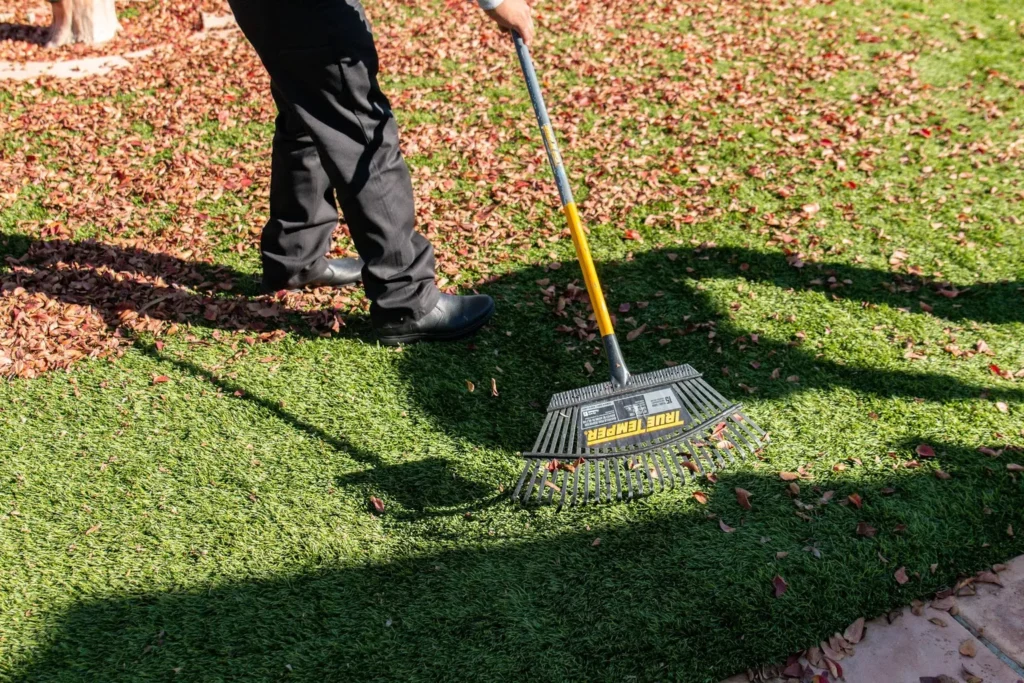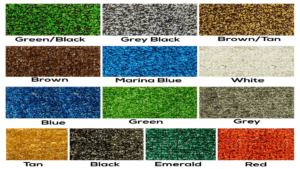Discover the top turf grass varieties for creating a lush, green lawn. Compare cool and warm season grasses to find the perfect low-maintenance option with superior aesthetics.
Introduction:
When it comes to creating a beautiful and functional lawn, choosing the right turf is crucial. With so many options available, it can be overwhelming to determine which type of turf is best for your US property. In this blog post, we’ll explore some of the most popular turf options and their benefits to help you make an informed decision.
Bermuda Grass
Bermuda grass is a popular choice for warm-season turf in the southern United States. It’s a drought-tolerant grass that thrives in full sun and high temperatures. Bermuda grass has a fine texture and a deep root system, making it an excellent choice for high-traffic areas such as sports fields and backyards. It’s also a low-maintenance grass that requires minimal watering and fertilization.
Zoysia Grass
Zoysia grass is a warm-season turf that’s known for its thick, lush blades. It’s a slow-growing grass that forms a dense mat, making it an excellent choice for areas with heavy foot traffic. Zoysia grass is also drought-tolerant and requires minimal maintenance, making it a popular choice for homeowners.
Fescue Grass
Fescue grass is a cool-season turf that’s commonly used in the northern United States. It’s a versatile grass that thrives in both sun and shade, making it an excellent choice for areas with mixed lighting conditions. Fescue grass has a fine texture and a deep root system, making it an excellent choice for high-traffic areas. It’s also a low-maintenance grass that requires minimal watering and fertilization.
St. Augustine Grass
St. Augustine grass is a warm-season turf that’s commonly used in the southern United States. It’s a fast-growing grass that forms a dense mat, making it an excellent choice for areas with heavy foot traffic. St. Augustine grass has a coarse texture and a shallow root system, making it susceptible to drought. It requires regular watering and fertilization to maintain its lush appearance.
Centipede Grass
Centipede grass is a warm-season turf that’s commonly used in the southeastern United States. It’s a low-maintenance grass that requires minimal watering and fertilization. Centipede grass has a coarse texture and a shallow root system, making it susceptible to drought. It’s also a slow-growing grass that forms a thin mat, making it an excellent choice for areas with low foot traffic.
What are the different types of turf available in the us market?

There are several types of turf available in the US market, including natural turf and artificial turf.
Natural turf is categorized into several types based on product types, including Bermuda, Zoysia, Fescue, and others. Bermuda and Zoysia are popular choices for warm-season turf, while Fescue is a cool-season turf that thrives in both sun and shade. Each type of natural turf has its own unique benefits and requires different levels of maintenance.
Artificial turf is another popular option in the US market. It is made from synthetic fibers that imitate the look and feel of natural grass. Artificial turf is low-maintenance and can be used in a variety of applications, including sports venues, residential lawns, and commercial buildings. Some of the key players in the artificial turf market include DuPont, FieldTurf, Shaw Industries Group, Inc., ACT Global, and TigerTurf.
Artificial turf is made from several types of materials, including polyethylene, polypropylene, nylon, and hybrid (polypropylene + polyethylene)5. Nylon is the strongest and most resilient synthetic fiber, making it an excellent choice for artificial turf. However, it is also the most expensive. Polyethylene and polypropylene are less expensive than nylon but are not as strong or resilient.
Artificial turf is finding new applications beyond traditional sports venues. It is being used in urban landscapes, on rooftops, balconies, and indoor spaces, and is becoming a popular choice for event venues, sustainable landscaping practices, and the pet industry. However, heat retention in artificial turf poses a significant challenge, and innovative cooling technologies are being explored to mitigate this issue.
In conclusion, there are several types of turf available in the US market, each with its own unique benefits and applications. Whether you prefer natural turf or artificial turf, there are many options to choose from to create a beautiful and functional lawn or sports field.
What are the differences between natural and artificial turf?

Natural turf and artificial turf are two popular options for lawns, sports fields, and other applications. While both have their advantages and disadvantages, there are significant differences between the two.
Natural turf, also known as natural grass, is a living organism that requires regular maintenance, including mowing, watering, and fertilizing. It provides a natural aesthetic and is often preferred for its softness and coolness in hot weather. However, natural grass can be affected by weather conditions, and its growth and color can vary throughout the year.
Artificial turf, on the other hand, is a synthetic surface that mimics the look and feel of natural grass. It is made from synthetic fibers that are tufted into a backing material and then filled with infill material to provide cushioning and stability. Artificial turf requires minimal maintenance, including occasional rinsing and brushing, and provides a consistent playing surface year-round. However, it can be hotter than natural grass in hot weather, and some people may prefer the natural aesthetic of real grass.
One of the key differences between natural and artificial turf is their impact on the environment. Natural grass absorbs carbon dioxide and releases oxygen, while artificial turf is made from non-biodegradable materials that can contribute to pollution. Natural grass also allows for rainwater to seep into the soil, while artificial turf can cause stormwater runoff, which can carry pollutants into waterways.
Another difference is their cost. While natural grass has a lower upfront cost, it requires ongoing maintenance expenses, including watering, fertilizing, and mowing. Artificial turf has a higher upfront cost but requires minimal maintenance expenses over its lifespan, which can make it a more cost-effective option in the long run.
In terms of performance, artificial turf provides a consistent playing surface that is less affected by weather conditions, making it a popular choice for sports fields. However, some athletes may prefer the softer surface and natural feel of natural grass.
Overall, the choice between natural and artificial turf depends on various factors, including personal preference, cost, maintenance, environmental impact, and performance. It is essential to consider these factors when deciding which option is best for your specific needs and goals.
What are the environmental impacts of using artificial turf?
The environmental impacts of using artificial turf are significant and worth considering before opting for it in your backyard or sports field. Here are some key environmental impacts highlighted in the sources provided:
- Heat Retention: Artificial turf can become extremely hot in summer, posing a risk of burns to children and radiating heat that can impact the surrounding environment, leading to increased energy consumption for cooling homes and buildings1.
- Loss of Biodiversity: Artificial turf lacks the biodiversity found in natural grass, impacting the soil’s carbon storage and the living systems below the ground. This lack of biodiversity can disrupt the soil fauna and critters, affecting the ecosystem’s balance and carbon storage capacity1.
- Disposal and Solid Waste Pollution: Artificial turf typically lasts for 8 to 10 years and is disposed of in landfills after use, contributing to solid waste pollution. Components of the turf system may not be easily recyclable, leading to environmental concerns related to waste management5.
- Microplastic Pollution: Migration of rubber and plastic particles from artificial turf into the environment can contribute to microplastic pollution, impacting wildlife habitats and ecosystems. This pollution can have long-lasting effects on the environment and wildlife5.
- Climate Change Impact: Choosing artificial turf over natural grass eliminates the potential for carbon capture in healthy soil ecosystems, contributing to the urban heat island effect. This loss of green space and carbon storage can have implications for climate change mitigation efforts
- Health Concerns: Artificial turf can trap heat, leading to concerns about heat-related illnesses and skin burns for athletes playing on these fields. The surface temperature of artificial turf can be significantly higher than natural grass, posing risks to athletes’ health and safety5.
In conclusion, while artificial turf offers benefits like low maintenance and consistent playing surfaces, it is essential to consider its environmental impacts, including heat retention, loss of biodiversity, waste disposal issues, microplastic pollution, climate change implications, and health concerns. Understanding these impacts can help individuals and communities make informed decisions when choosing between natural and artificial turf for their outdoor spaces.
How does the environmental impact of artificial turf compare to natural grass?
The environmental impact of artificial turf compared to natural grass depends on several factors, including maintenance, carbon footprint, air pollutants, eutrophication, and ecotoxic emissions.
According to a study by Zurich University of Applied Sciences, natural turf causes 60% and 45% of the greenhouse gas emissions of natural turf, naturally drained and with a drainage layer, respectively, due to maintenance. On the other hand, artificial turf with and without infill only causes 8% and just over 1% of the environmental impact from maintenance3. However, renovation causes 45% to 48% and disposal 20% to 23% of the greenhouse gas emissions of artificial turf.
In terms of air pollutants and the eutrophication of seas and soils, the environmental impact of artificial turf is significantly lower than that of natural turf, mainly due to the maintenance of natural turf, including the burning of diesel during lawn-mowing and the use of artificial fertilisers. However, natural turf and artificial turf differ most in terms of ecotoxic emissions, with plant protection products used on natural turf releasing toxic effects into the environment.
A preliminary life cycle assessment suggested that the environmental impacts of artificial turf fields were lower than equivalent grass fields. However, artificial turf can become extremely hot in summer, posing a risk of burns to children and radiating heat that can impact the surrounding environment, leading to increased energy consumption for cooling homes and buildings. Artificial turf also lacks the biodiversity found in natural grass, impacting the soil’s carbon storage and the living systems below the ground.
In conclusion, while artificial turf may have lower environmental impacts in some areas, such as air pollutants and eutrophication, it can have higher impacts in others, such as ecotoxic emissions and heat retention. Natural grass, on the other hand, has higher maintenance costs but contributes to carbon sequestration, helps maintain a healthier ecosystem, and provides a natural aesthetic. Ultimately, the choice between natural and artificial turf depends on the specific needs and priorities of the user, including factors such as maintenance costs, environmental impact, and aesthetic preferences.
What are the specific environmental impacts of artificial turf?
The specific environmental impacts of artificial turf include:
- Heat Retention: Artificial turf can become extremely hot in summer, posing a risk of burns to children and radiating heat that can impact the surrounding environment, leading to increased energy consumption for cooling homes and buildings.
- Lack of Biodiversity: Artificial turf does not support the biodiversity found in natural grass, impacting the carbon in the soil and the living systems below the ground. This lack of biodiversity disrupts the soil fauna and critters, affecting the ecosystem’s balance and carbon storage capacity.
- Microplastic Pollution: Migration of rubber and plastic particles from artificial turf into the environment can contribute to microplastic pollution, impacting wildlife habitats and ecosystems. This pollution can have long-lasting effects on the environment and wildlife5.
- Environmental Damage: Artificial turf can cause environmental damage, including the consumption of raw materials and energy, emissions to air, water, and land. The lack of transpiration and heat trapping in the plastic and rubber materials elevate the surface temperature of artificial turf, especially under direct sunlight.
- Greenhouse Gas Emissions: The production and transportation of artificial turf release large amounts of greenhouse gases. If the components of artificial turf are not recycled at the end of its life, the greenhouse gas emissions from the artificial turf field would nearly double.
- Infill Concerns: The infill used in artificial turf, such as silica sand and granulated rubber made from old car tires, can contribute to environmental issues. Sharp edges in the infill material can break off grass blades, and loose infill material can spread and impact aquatic environments.
- Soil and Groundwater Contamination: The use of chemicals on natural grass fields for maintenance can cause soil and groundwater contamination. Artificial turf eliminates the need for chemicals, reducing the risk of contamination.
These specific environmental impacts highlight the importance of considering the broader implications of choosing artificial turf over natural grass, especially in terms of sustainability, biodiversity, pollution, and resource consumption.
What are the health risks associated with artificial turf?
Artificial turf has been associated with several health risks, including skin abrasions, bacterial infections, and heat-related illnesses. Turf burns, or skin abrasions, are more common on artificial turf than on natural grass and can increase the risk of bacterial infections. Studies have implicated artificial turf as a source of methicillin-resistant Staphylococcus aureus (MRSA) in athletes.
In sunny, warm weather, artificial turf can become much hotter than natural grass, raising concerns of heat-related illness and skin burns for athletes playing on the fields. Heat-related illness can be a life-threatening emergency.
Chemicals identified in artificial turf, including polycyclic aromatic hydrocarbons (PAHs), phthalates, and per- and polyfluoroalkyl substances (PFAS), are known carcinogens, neurotoxicants, mutagens, and endocrine disruptors. However, few studies have looked directly at health outcomes of exposure to these chemicals in the context of artificial turf.
Ecotoxicology studies in invertebrates exposed to crumb rubber have identified risks to organisms whose habitats have been contaminated by artificial turf. Chicken eggs injected with crumb rubber leachate also showed impaired development and endocrine disruption.
The only human epidemiology studies conducted related to artificial turf have been highly limited in design, focusing on cancer incidence. In addition, government agencies have begun their own risk assessment studies to aid community decisions.
Additional studies in in vitro and in vivo translational models, ecotoxicological systems, and human epidemiology are strongly needed to consider exposure from both field use and runoff, components other than crumb rubber, sensitive windows of development, and additional physiological endpoints. Identification of potential health effects from exposures due to spending time at artificial turf fields and adjacent environments that may be contaminated by runoff will aid in risk assessment and community decision making on the use of artificial turf.
Which turf looks the best?
When it comes to choosing the best turf for your needs, there are several factors to consider, including the type of turf, its appearance, durability, and environmental impact.
If you are looking for a natural-looking turf, you can choose one that includes various colors to mimic the look of real grass. High-quality artificial grass will have a blend of different shades of green, and some may also include brown or tan fibers to resemble dead grass and provide a more natural appearance.
Durability is another important factor to consider. The best artificial grass is specifically designed to resist matting and laying flat, with turf fibers that return to an upright position when you walk across them. This is partly due to the structure of the fibers and partly to the infill that’s used. Rounded silica sand infill and T°Cool’s Evaporative Cooling Infill are recommended for their ability to keep the synthetic turf springy and cool, just like the real thing.
A quality turf drainage system is also essential to ensure that water and pet urine can pass through the turf and into the sub-base below. There are two types of turf backings or drainage systems: 100% permeable and hole-punched. The 100% permeable backing allows water and pet urine to pass directly through any point in the turf, while hole-punched backing has drainage holes every few inches and is best for dry areas that seldom see excess runoff.
Antimicrobial properties are also important if you have pets or children on your lawn often. Antimicrobial additives can be added during the manufacturing process to help prevent the buildup of odors from pet urine, as well as germs and bacteria, keeping your backyard denizens clean and healthy.
When it comes to the appearance of your turf, you can choose from a variety of colors and textures to match the natural grass in your area. A close-up photo or sample of grass from a neighboring lawn can be used as a guide when choosing a color and texture of artificial grass for your lawn.
In terms of environmental impact, artificial turf has both advantages and disadvantages. While it does not require water or pesticides, it can contribute to microplastic pollution and may not provide the same ecological benefits as natural grass. However, some artificial turf products are made from eco-friendly materials, such as recycled plastic, and can be recycled at the end of their life.
In conclusion, when choosing the best turf for your needs, it is important to consider factors such as appearance, durability, drainage, antimicrobial properties, and environmental impact. By carefully evaluating your options, you can find a turf that meets your needs and enhances the beauty and functionality of your outdoor space.
How to maintain artificial turf to keep it looking fresh?

To maintain artificial turf and keep it looking fresh, follow these key steps:
- Regular Cleaning: Remove debris like leaves, twigs, and dirt by using a leaf blower, stiff broom, or garden vacuum. This helps prevent the buildup of dirt and keeps the turf looking clean and vibrant.
- Deep Cleaning: Periodically perform a deeper clean by using a flexible lawn rake or power brush to agitate the turf fibers, keeping them upright and removing deeper debris. Rinse the turf with a garden hose to wash away dust and pollen, ensuring proper drainage.
- Stain Removal: Address stains promptly to prevent them from setting in. Blot liquid spills with a clean, dry cloth and use a mixture of mild detergent and water to gently scrub the stain. For tougher stains like oil-based stains, gum, or pet waste, use appropriate cleaning solutions or methods.
- Odor Management: Artificial turf can trap odors, especially from pet urine. Use a water-vinegar mixture to neutralize odors and disinfect the turf. Regular rinsing with water and applying natural deodorizers can also help maintain a fresh-smelling lawn.
- Preventive Measures: Implement preventive measures to extend the lifespan and preserve the aesthetics of your artificial turf. This includes periodic inspection for wear, damage, or drainage issues, using pet-friendly cleaning products, checking the infill level, and preventing weed growth.
- Proper Maintenance Tools: Use the right tools for maintenance, such as a leaf blower, rake, brush, and hose with a light pressure setting. These tools help in keeping the turf clean and well-maintained.
By following these maintenance tips, you can ensure that your artificial turf remains in excellent condition, looking fresh and vibrant year-round. Regular care and attention will help preserve the longevity and appearance of your synthetic lawn, making it a worthwhile investment for any homeowner or facility manager.
What are the benefits of using artificial turf over natural grass?
Artificial turf offers several benefits over natural grass, including:
- Reduced Maintenance: Artificial turf requires minimal maintenance compared to natural grass, which needs regular mowing, watering, and fertilizing. This saves time and money for homeowners and facilities managers.
- Durability: Artificial turf is highly durable and can withstand heavy foot traffic, making it an excellent choice for sports fields, playgrounds, and high-traffic areas.
- All-weather Use: Artificial turf is weather-resistant and can be used all year round, regardless of rain or sun. It drains quickly and efficiently, preventing floods or standing water.
- Extensive Uses: Artificial turf can be used in various settings beyond gardens, such as decks, swimming areas, roof terraces, play areas, offices, exhibition spaces, balconies, dining establishments, hotels, gyms, and more.
- Safe for Children and Pets: Artificial turf is soft, cushioned, and free from chemicals and pesticides, making it safer for children and pets. Some brands also contain anti-bacterial properties to prevent the spread of germs and bacteria.
- Cost-effective: Artificial turf is a cost-effective solution in the long run, as it does not require watering, fertilizing, or mowing. It is also immune to climate challenges and can be used in indoor spaces.
- Aesthetically Pleasing: Artificial turf can be customized to your preferences, with various colors, heights, densities, textures, and designs available. It can mimic the look of natural grass while providing a consistent and clean appearance.
- Environmentally Friendly: Artificial turf can be produced using recycled materials, reducing its environmental impact. It also eliminates the need for harsh fertilizers, which can harm the local environment.
- Consistent Finish: Artificial turf provides a clean and consistent finish, reducing maintenance costs and eliminating patchiness, discoloration, weeds, or mud.
- Proper Drainage: Artificial turf is designed with small holes for proper drainage, making it a safer and more convenient option for outdoor activities.
However, there are also some downsides to artificial turf, such as the initial cost of installation and the potential for heat absorption in hot weather. It is essential to weigh the pros and cons and consider your specific needs and circumstances when deciding between artificial turf and natural grass.
Conclusion:
Choosing the right turf for your US lawn depends on several factors, including your location, climate, and maintenance preferences. Bermuda grass, Zoysia grass, Fescue grass, St. Augustine grass, and Centipede grass are all popular options that offer unique benefits. By considering these factors and working with a local turf expert, you can create a beautiful and functional lawn that meets your needs and exceeds your expectations.
FAQs:
Bermuda grass, Zoysia grass, and Fescue grass are all excellent choices for high-traffic areas due to their dense root systems and ability to withstand heavy foot traffic.
Bermuda grass and Zoysia grass are both drought-tolerant turfs that require minimal watering and maintenance.
Fescue grass is a cool-season turf that thrives in both sun and shade, making it an excellent choice for areas with mixed lighting conditions.
Centipede grass is a low-maintenance turf that requires minimal watering and fertilization.
Bermuda grass is a popular choice for sports fields due to its ability to withstand high foot traffic and maintain its lush appearance.
